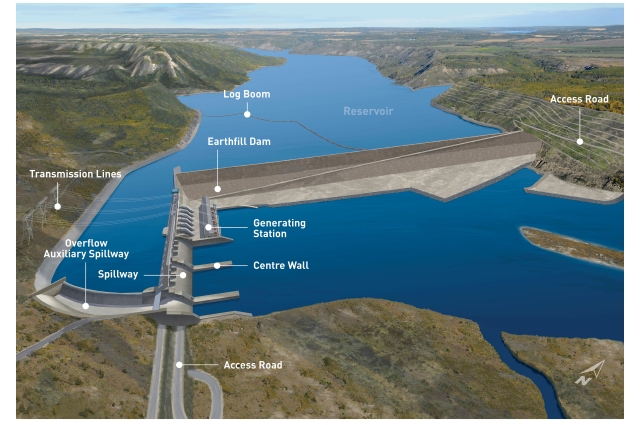By Joyce Nelson
March 19, 2019
In all the press coverage of the “the SNC-Lavalin affair,” not enough attention has been paid to the company’s involvement in Site C – the contentious $11 billion dam being constructed in B.C.’s Peace River valley.
The Liberals say that any pressure they put on Jody Wilson-Raybouldto rubber-stamp a “deferred prosecution agreement” for SNC-Lavalin was to protect jobs at the company. But the pressure may have been to protect something much bigger: the Liberals’ vision for Canada’s future. Site C epitomises that vision.
The “Many Lives” of Site C
Birthed in 1959 on the drawing boards of the U.S. Army Corps of Engineers and BC Electric (then owned by Montreal-based Power Corp), the Site C dam has been declared dead, then alive, then dead again several times over the next five decades until 2010, when BC Premier Gordon Campbellannounced that Site C would proceed. [1]
Tracking SNC-Lavalin’s involvement in Site C during recent years has been difficult, but Charlie Smith, editor of The Georgia Straight, has filled in some of the missing information.

Site C dam (Source: CC BY-SA 3.0)
Sometime in 2007, the Site C dam project was quietly moved to Stage 2 of a five-stage process. Smith wrote,
“SNC-Lavalin and Klohn Crippen Berger were prime consultants for Stage 2 of the Site C project. This had to occur before the project could proceed to Stage 3 in the five-stage planning process. The decision to advance to Stage 3 was based on a prediction in the Stage 2 report that demand for B.C. electricity will increase 20 to 40 percent over the next 20 years. ‘As extensive as BC Hydro’s hydroelectric assets are, they will not be enough to provide future British Columbians with electricity self-sufficiency if demand continues to grow as projected,’ the Stage 2 report [Fall, 2009] declared. Bingo. This gave the pro-Site C politicians in the B.C. Liberal party … all the justification they needed.” [2]
On April 19, 2010 Premier Campbell announced that Site C would proceed. At the time, Chief Roland Willson of the West Moberly First Nation called the entire five-stage process a “’farce,’ and said the government hadn’t finished the second stage of the development process, so he doesn’t know how it can go ahead to the third. Willson said First Nations in the area haven’t seen studies on land use, wildlife, the fishery or the cultural significance of the region, and the process can’t move on to environmental assessments [Stage 3] without that work.” [3]
Read More HERE


